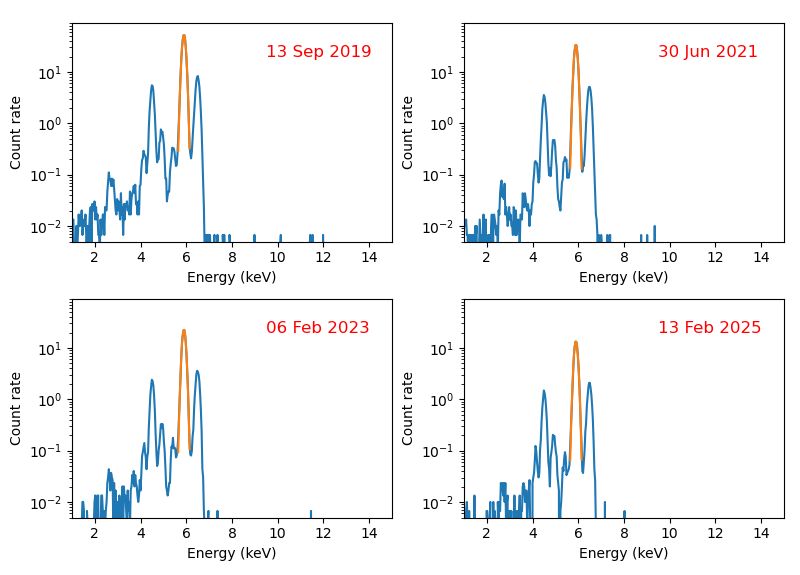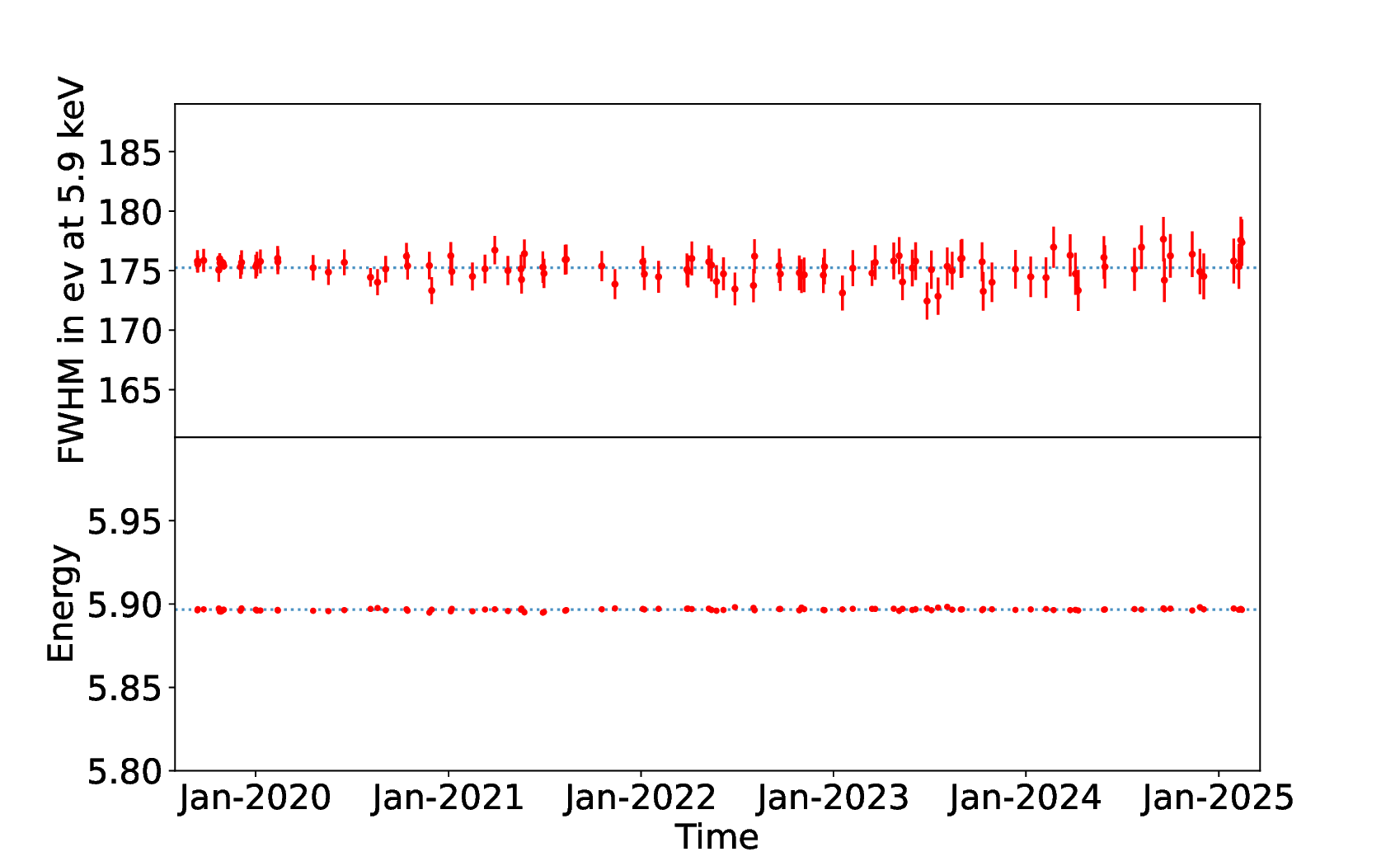The Chandrayaan-2 spacecraft was launched by the Geosynchronous Satellite Launch Vehicle (GSLV)
MkIII-M1, on 22 July 2019. It reached its nominal circular orbit around the Moon in early
September. XSM began its nominal operation in lunar orbit from 12 September, 2019.
Observing Seasons and Visibility of the Sun
XSM operates almost continously in orbit; however, the visibility of the Sun varies over the year depending
on the orbital season of the Chandrayaan-2 spacecraft. During the 'Dawn-Dusk' (DD) seasons, the three-month
periods around the time when the orbital plane of the spacecraft is perpendicular to the Sun vector, XSM has
very good visibility of the Sun. During the 'Noon-Midnight' (NM) seasons around the time where the orbital plane
is parallel to the Sun vector, the observations are very sparse with ~20 days with no solar observations in the
beginning and end of the season.
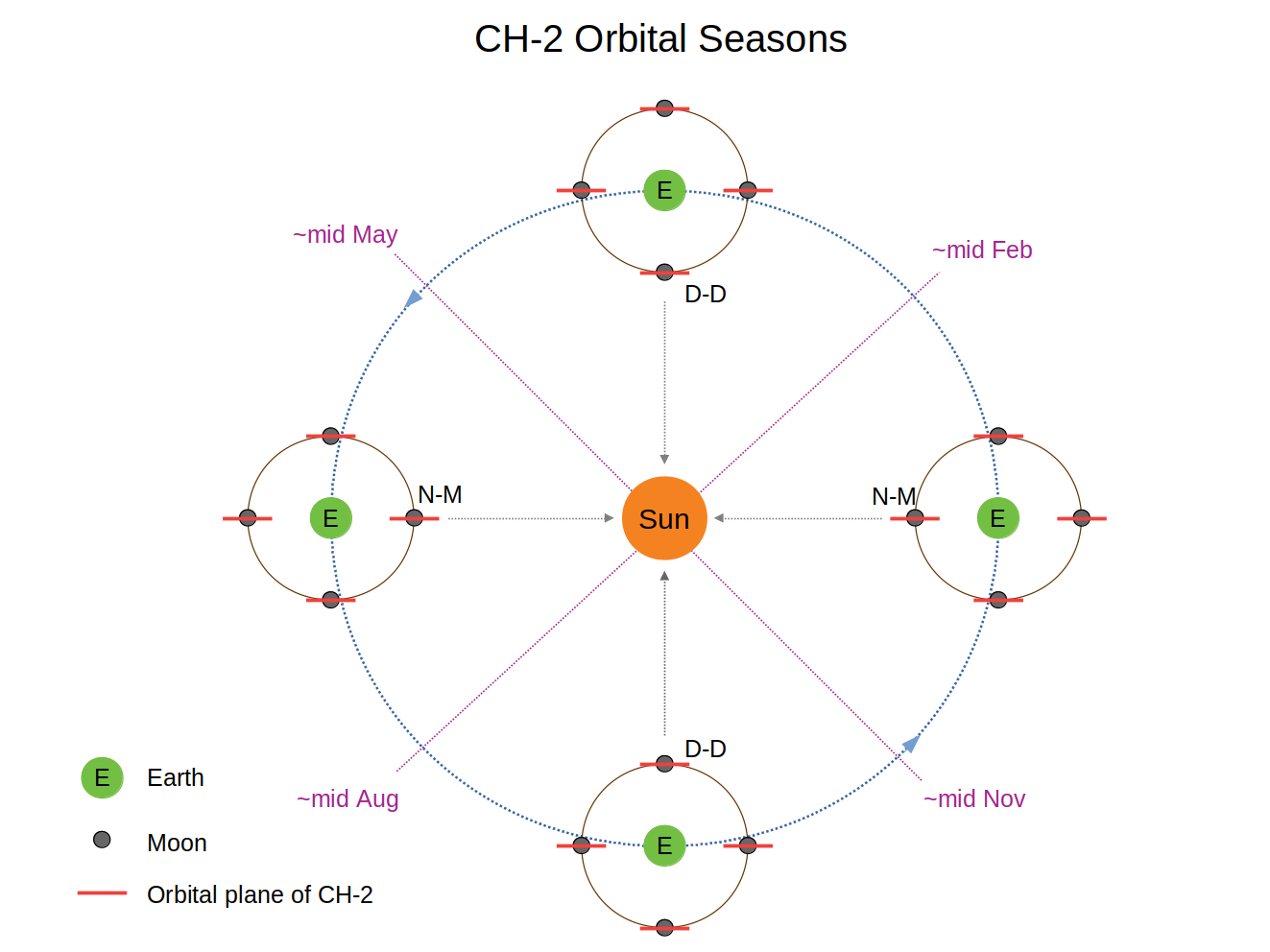
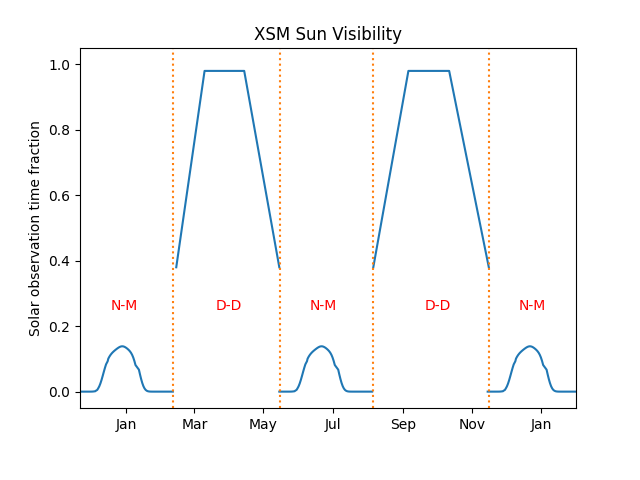
As the XSM is fix-mounted on the spacecraft, the solar angle with respect to the instrument boresight varies
within the orbit and thus the effective area also varies. The incident fluxes are obtained by correcting
the observed spectrum for this effective area variation. For observations during D-D seasons, this correction
is well established and the uncertainty in the effective area with angle and thus the obtained flux
is within 1%. For observations in N-M seasons, where the observations are sparse, the uncertainties are much
larger, currently estimated to be ~10-15%.
Any periodic variations seen in flux over the orbital time periods of ~120 minutes should be ignored
as such variations could be due to the uncertainties in the effective area correction.
Expected Count Rates and Filter Movement
As the X-ray flux from the Sun varies over several orders of magnitude, XSM employs a filter wheel mechanism to
cover the entire dynamic range. A 250 micron thick Beryllium filter is brought in front of the detector when the incident flux
goes beyond a threshold value, which results in drastic reduction in effective area of the instrument at lower energies
as shown with the dotted lines in the effective area plot below.
The other figure shows expected range of count rates in XSM at different levels of solar activity.
Blue and green shaded regions correspond to count rates with and without the Be filter, respectively. Dark colors
represent the expected modes of operation for the threshold rates for filter change shown by the
horizontal dashed lines. The XSM operates without the Be filter (shown in dark green) up to a count rate of
80,000 counts/s , beyond which it operates with the Be filter in front of the detector (shown in
dark blue) until the count rate drops below 1000 counts/s . Nominally, the transition to observation with filter is expected at around the M5 class of solar activity. The threshold count rate values mentioned are the default settings and
they can be changed by ground command.
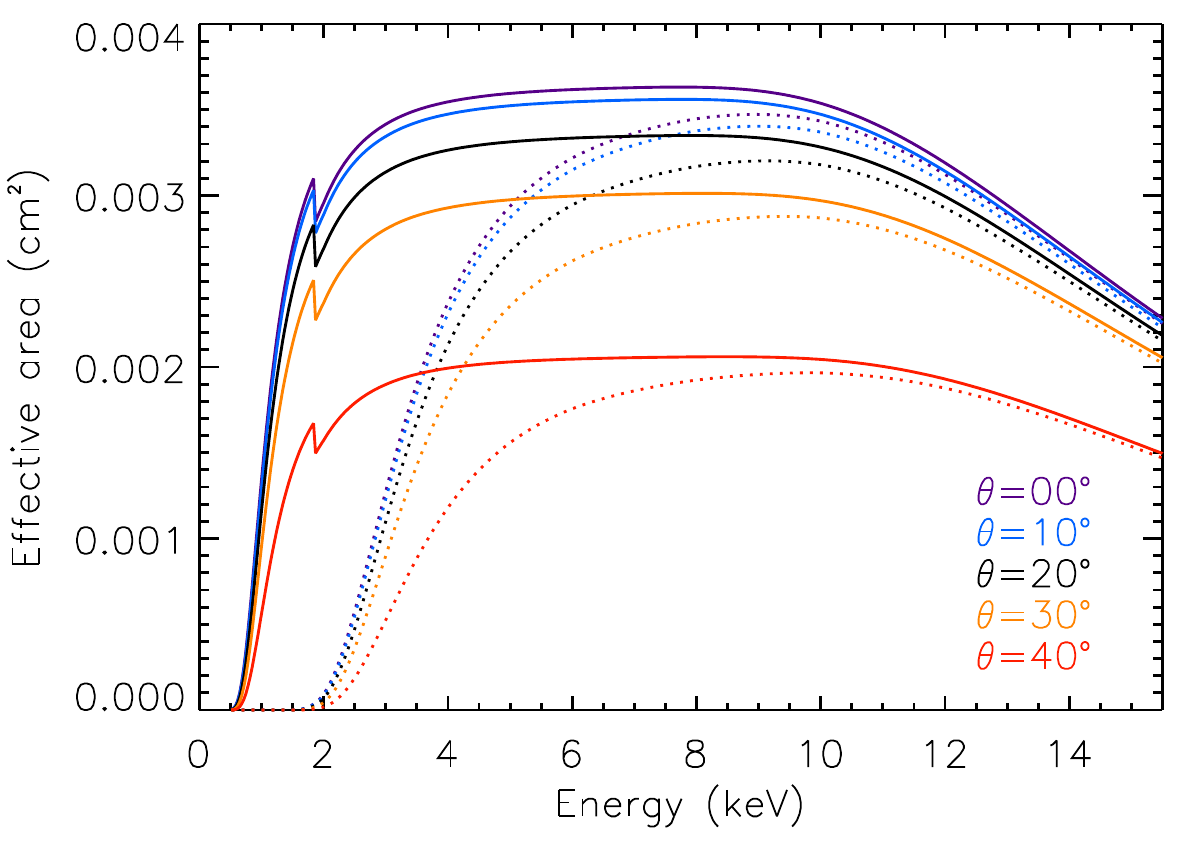
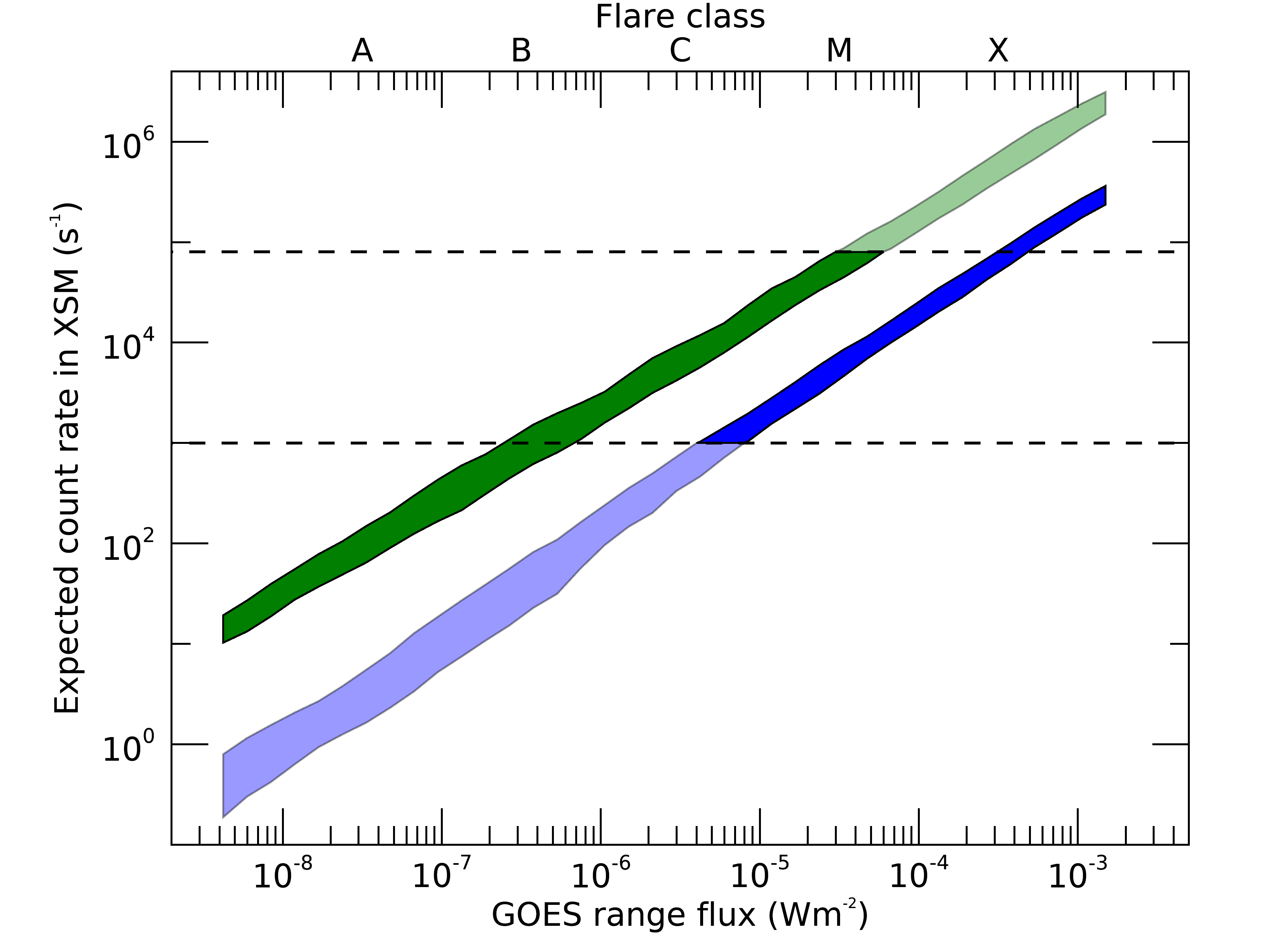
On-board Performance
Spectral performance of the instrument is evaluated from time to time in-orbit using the on-board Fe-55 calibration
source. Calibration source spectrum is usually acquired whenever XSM is powered off for any mission operations such
as orbital maneuvers. The spectral resolution is measured from the observed spectrum as FWHM of the spectral
lines. Figures below show the calibration spectra during some of the observations and the FWHM and peak
energy of the 5.89 keV line over time. So far, no degradation in spectral resolution has been observed.







